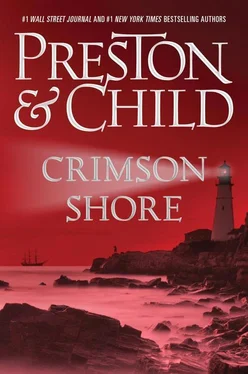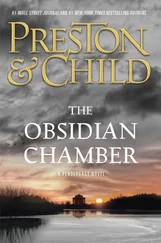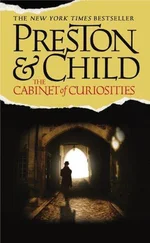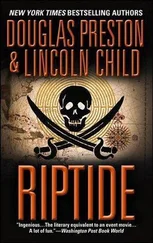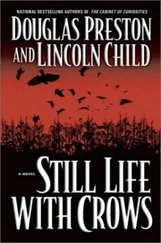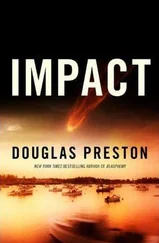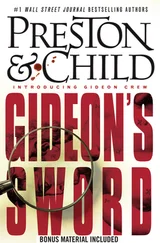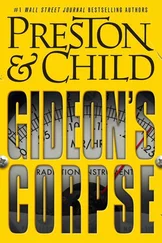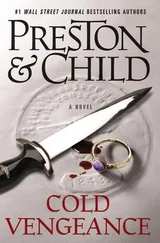Constance considered this a moment. “Yes, I do have an interest, but not in the way you might think. I’m investigating a murder.”
“And what,” said Raven, her voice suddenly wary and her suspicious look returning, “could the Salem Coven possibly have to do with a murder?”
“You misunderstand. I’ve come not to accuse but to ask for your help.”
The woman eased herself back. “I see. In that case, I would be happy to oblige. You must understand, witches have been subjected to persecution and lies for many centuries. Wicca is all about peace, harmony, and oneness with the divine. To be a white witch is to be a healer, a teacher, a seeker! It is worth pointing out that our religion predates Christianity by twenty thousand years.” Her tone had become condescending. “Yes, we do perform magick, but our spells involve healing, wisdom, and love. We do not engage in satanic worship or consort with demons. Satan is a Christian creation and you can keep him, thank you!”
She folded her hands.
“I have no interest in Satan or any other demon,” said Constance, trying to stem the flow and redirect the conversation. “I’m here because I’d like your opinion on a certain set of inscriptions.”
“Inscriptions, you say? Let us see them.”
She held out her hand. Constance withdrew the sheet of paper that Pendergast had given her and passed it over. Raven took it, glanced at it.
A sudden, ice-cold silence descended on the room. “What is your interest in these?” the woman demanded.
“As I told you, I’m investigating a murder.”
Raven quickly handed them back. “Wicca has nothing to do with the Tybane Inscriptions. I can’t help you.”
“What, exactly, are the Tybane Inscriptions?”
“They have no relation to our coven or us. ‘Harm none’ is our creed. Anyone who intends harm through magick is not a Wiccan or a witch. Just to bring them in here, to soil this place of worship, is unacceptable. Now, I am a busy woman. I will ask you to remove yourself and those markings immediately.”
“Do you mean to tell me,” Constance said, “that you know something of these markings? And yet you refuse to tell me?”
The woman rose in a vast, indignant rustle of fabric. “The door is over there, Miss Greene.”
Constance did not move. Instead, she fixed her eyes on the woman, who was staring down at her, the loose folds of skin under her chin trembling, a fat finger pointing to the door.
“Are you deaf, woman? Get out!”
At hearing this voice shouting directly into her face, Constance could feel a stirring of the terrible anger that had afflicted her in the past. She swallowed, felt herself going pale with rage. She rose to her feet, eyes locked on the woman. Raven stared back, her expression full of imperious defiance.
Constance took a step forward. Now she was so close to the woman that they were almost touching. She could smell patchouli and frankincense. The woman faltered, her eyes flickering away momentarily.
“I—” the woman said, then stopped, unable to continue.
Curiously, as if from a great distance, Constance watched as her right hand slowly rose. She took the loose wattle of skin under the woman’s chin between her own thumb and first finger.
The woman stared back, unable to speak, eyes widening.
Now Constance began to squeeze, first gently, then harder. Raven staggered, made a strange gurgling deep in her throat.
In utter silence, Constance squeezed a little harder, directing her nails inward, digging into the clammy, fleshy skin.
All of a sudden, the woman found her voice. She fell backward, gasping in a huge lungful of air as Constance released her grip. “You!” she said, staring at Constance in terror. “Please... please...”
Constance lowered her hand.
“I’ll help. Just don’t look at me like that, please .” Reaching behind herself, her eyes glued to Constance’s, the woman found the arms of her wing chair and eased herself down, as if stricken. Red weals were already coming up on the skin of her throat.
Constance remained standing.
“What I speak of... no one can know the source.”
It was a moment before the anger had receded sufficiently for Constance to trust her own voice. At last, she replied. “I will maintain total confidentiality.”
“Well then... well then...” The woman reached out for a glass of water sitting on a side table, drank from it with a trembling hand, replaced it with a rattle. “No one knows precisely what the Tybane Inscriptions mean,” she said, her voice hoarse. “They were found incised on a slate tablet over a century ago in the Exmouth marshes. On the site of what we believed to be the Sabbat Ground of a long-abandoned coven.”
“Sabbat Ground?”
“A place where witches perform their ceremonies. But these were not Wiccans — white witches. These were black witches.”
“Explain.”
“Wherever there is power to do good, as in our Wiccan spells and rituals, there are also some who would turn magick the other way. The temptation for power or retribution is always present in life — through loss of a job, rivalry for affections, whatever.”
“And what does Tybane mean?”
“ Bane is from the Old English bana , meaning ‘an affliction or curse.’ It also refers to poison. Wolfsbane, for example, so called because it was used to kill wolves.”
“And the Ty portion of the word?”
“A mystery.”
“What, if anything, are the Tybane Inscriptions used for today?”
“There are rumors — rumors only. Some may use them to invoke dark powers, or for black rituals. The inscriptions are formidable and wicked, but only the most reckless or desperate witch would use them, because their exact purpose and meaning is so unclear. It’s playing with fire.”
“Have you ever used them?”
The woman hung her head.
“Where is this inscribed stone now?” Constance went on.
“It was destroyed a long time ago. But its discoverer left his notes behind.”
“To what notes do you refer?”
“The papers of an amateur archaeologist named Sutter. They’re here, in the Old Salem Historical Society.” A pause. “Some have yielded to the temptation and made the unfortunate pilgrimage to consult those papers.”
“And?”
The woman did not look up. “They have all come to regret it.”
Constance Greene walked through the charming center of Salem on her way to the Old Salem Historical Society, which lay about a mile from the coven. She was surprised to find it to be a prosperous and imposing brick building of late nineteenth-century construction. She entered to find herself in a spacious lobby, updated with all the latest in computer catalogs and electronic equipment, and guarded by metal detectors run by a potbellied security officer.
In a moment she was through, thoroughly irradiated and wanded, much to her annoyance. A cheerful lady behind the desk was, it turned out, familiar with the Sutter papers and directed her to the third-floor department where they could be found.
A high-speed elevator whisked her up, the doors hissed open, and she found herself in a spare, formal space. An older woman with iron-gray hair pulled back in a severe bun manned a nearby desk. As Constance stepped up, the woman hung up her phone.
“Constance Greene?” she asked in a voice of alarming efficiency. “Here to see the Sutter papers?”
Constance bowed acknowledgment.
“I am Mrs. Jobe, the archival librarian. Come with me.” She rose, fingering a card that hung on a lanyard around her neck. She looked at Constance with compressed lips, distaste writ large on her face.
Constance followed her down a corridor. Another door hissed open at the wave of the woman’s card, and they entered a small room with a baize-covered table.
Читать дальше
